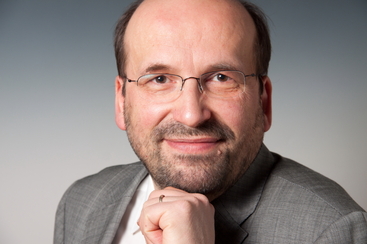Enhancing Life Through a Framework of Hope: A Q&A with Dr. Günter Thomas
December 10, 2015 • By Günter Thomas
Honoring human life in the everyday world has always been a central value within the Judeo-Christian tradition, which also places a strong emphasis on a “life to come.” Günter Thomas, Professor of Systematic Theology and Ethics at Ruhr-University Bochum in Germany and a Principal Investigator for The Enhancing Life Project, is investigating the concept of religious “counter-worlds” which help the faithful navigate within the world, while simultaneously offering permanent and creative spiritual aspirations. Dr. Thomas will explore the dynamic relationship between the world and the religious counter-world through the unity of love, faith, and hope in three Christian traditions, with the goal of creating a theology that can respond to the most urgent questions about enhancing life in the twenty-first century.
Read a blog post by Günter Thomas about religious terrorism and the uncanny power of counter-worlds here.
What was the seed or the spark for the research you’re pursuing for the Enhancing Life Project? Are these new questions, or an extension of past research, or both?
The trajectory that led to the Enhancing Life Project began, for me, with a very simple question: What’s behind the religious idea of a new creation? What is limiting life from flourishing in the original creation? It’s not just sin; it’s also a kind of internal brokenness and destructiveness in life. In many strains of the biblical tradition, that’s closely tied to illness, which is in turn related to the notion of a finite life. What is finitude, and when is it destructive? What’s the kind of finitude that you accept and when do you fight against it? This is a distinction that changes over time. Today, if you say, “My kid has the flu, but I’m not going to take him to the doctor,” that might sound a little crazy. But in the 15th century when life expectancy was something like 32, you draw a different line. What this means for me is that we have to think about what it really means to have a full life. In the Hebrew tradition, chaim—life—is a core value. And that’s what led me to think about broader perspectives on enhancing life.
What does “enhancing life” mean for you? In what way will your project contribute to the enhancement of life?
Enhancing life, for me, means working with the fragility of life and the wonderful dynamics of life within a framework of hope. In our cultures, there’s a lot of emphasis on a strong life. But as a theologian, I’m deeply convinced that we need to make space for God’s creative response to the events of this life. If we have this hope that God will respond to the weak life or even the destruction of life, I think we can peacefully deal with the dark side of life and acknowledge life’s fragility. This is a constant debate in medicine. I clearly see the life-enabling dimension of modern technology—with an average age of 32, how many of us would even be here? But we can’t get away from assessing what is the most responsible action, looking to see whether our solutions are actually creating new problems. We want to get away from a simple notion of progress. We can’t have “the more, the better” be our only guide. Life is at least sometimes enhanced by refraining from doing something. And sometimes we have to do quite a bit.
What’s the most surprising or interesting challenge you’ve encountered so far as a Principal Investigator for The Enhancing Life Project?
One real challenge for the organizers of the Enhancing Life Project was: if we select strong scholars with strong egos, people who normally manage other people, what will happen when they’re sitting together at a residency seminar? But overall, despite a few critical moments at the first residency seminar, I have been astonished by the degree to which people were willing to engage with each other with real curiosity and openness. Some of the scholars said they’d never experienced anything like it. So that was very gratifying, because getting together a big group of people at the top of their disciplines—that’s a real challenge.
How do public debates -- whether it’s political, cultural, etc -- shape your work? What are you hoping to offer those debates?
My project has become more relevant than I ever wanted it to be. One of my arguments is that religious counter-worlds can be very helpful but also very destructive. In certain parts of the world today, what we see today as religious and political terrorism is essentially hope becoming violent. If your religious vision is not becoming realized, you can take—instead of words—a gun. What I’m saying in my project is that religious hope without love can become desperate and eventually, very destructive. That’s what is happening today with religious martyrs.
You don’t spend all of your time doing research and teaching! What’s your favorite way to spend your spare time?
I’m an artist, mostly working with wood and paper. I’ve had a few exhibitions over the years. It’s not religious art, but in some ways I see it as parallel to my theological work. And sometimes you’re just in the mood to do art with a chainsaw!